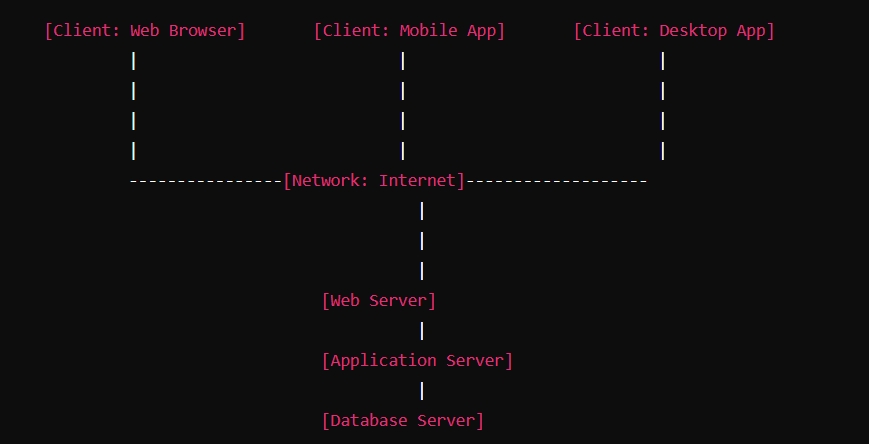
Client-server architecture is a computing model that divides the system into two main components: the client (end-user interface) and the server (backend processing and data storage). This architecture is widely used in network computing, allowing various systems and applications to interact efficiently. Here’s a detailed explanation:
Components
- Client:
- Any device or application that requests services or resources from the server.
- Examples include web browsers, mobile apps, and desktop applications.
- Clients usually have a user interface and may perform some processing, but they depend on the server for data and additional processing.
- Server:
- Provides services or resources to clients.
- Capable of handling multiple client requests simultaneously.
- Performs data processing, storage, and offers services such as authentication, file sharing, and database access.
- Examples include web servers, database servers, and application servers.
Communication
- Clients and servers communicate over a network, which can be the Internet or a local area network (LAN).
- The communication typically follows a request-response model, where the client sends a request and the server responds with the necessary data or service.
Protocols
- Common protocols used in client-server communication include HTTP/HTTPS (for web services), FTP (for file transfer), SMTP/IMAP/POP3 (for email), and SQL (for database queries).
Architecture Types
- Two-Tier Architecture:
- Consists of a client and a server.
- The client handles the presentation layer, while the server manages both the application and data layers.
- Example: A desktop application accessing a database server directly.
- Three-Tier Architecture:
- Includes a client, an application server, and a database server.
- The client handles the presentation layer.
- The application server handles the business logic (application layer).
- The database server handles data storage and retrieval (data layer).
- Example: A web application with a web server (application server) and a separate database server.
- N-Tier Architecture (Multi-Tier):
- Extends the three-tier architecture by adding more layers.
- Can include additional servers for specific purposes like load balancing, caching, or specialized services (e.g., microservices).
- Example: Large-scale enterprise applications with multiple interconnected services and databases.
Advantages
- Scalability: Servers can be upgraded or expanded to handle more clients.
- Manageability: Centralized control over data and services simplifies management.
- Security: Servers can enforce security policies and control access to resources.
- Maintenance: Easier to update and maintain server-side software without affecting clients.
Disadvantages
- Single Point of Failure: If the server fails, clients cannot access the required services.
- Network Dependency: Clients rely on network connectivity to communicate with the server.
- Cost: Setting up and maintaining servers can be expensive, especially for large-scale applications.
Example: Web Application
- Client: Web browser (Chrome, Firefox, etc.)
- Server: Web server (Apache, Nginx)
- Communication Protocol: HTTP/HTTPS
- Process:
- The user enters a URL into the browser (client).
- The browser sends an HTTP request to the web server.
- The web server processes the request, possibly querying a database, and generates an HTTP response.
- The browser receives and displays the response to the user.
Modern Trends
- Microservices: Breaking down applications into smaller, independent services that can be developed, deployed, and scaled independently.
- Serverless Computing: Running code without provisioning or managing servers, where the cloud provider manages the infrastructure.
- Cloud Computing: Utilizing cloud services for scalable and on-demand resources, reducing the need for physical servers.
Understanding client-server architecture is crucial for designing robust, scalable, and efficient networked applications, whether for web, mobile, or enterprise environments.


